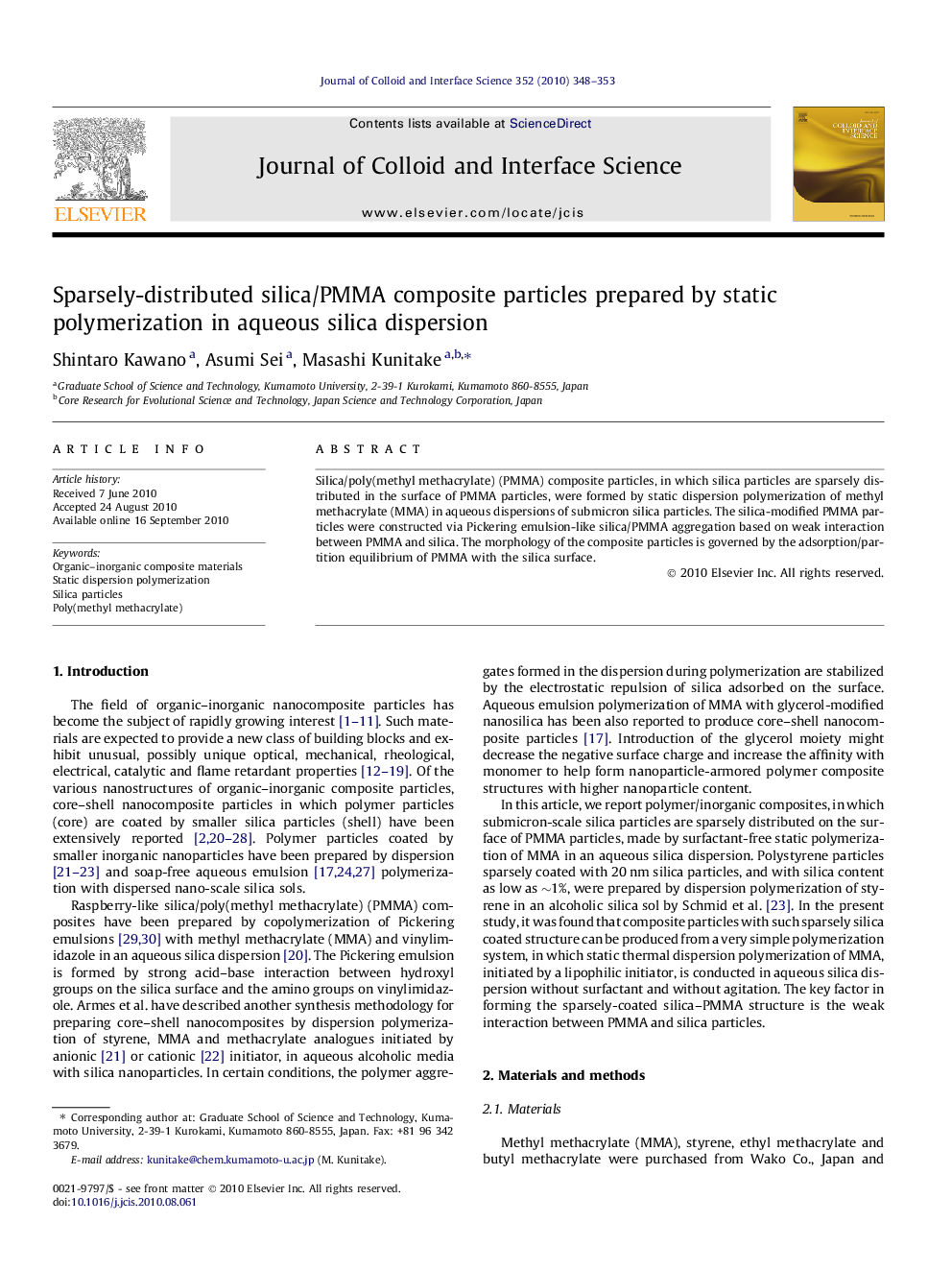| Article ID | Journal | Published Year | Pages | File Type |
|---|---|---|---|---|
| 609219 | Journal of Colloid and Interface Science | 2010 | 6 Pages |
Silica/poly(methyl methacrylate) (PMMA) composite particles, in which silica particles are sparsely distributed in the surface of PMMA particles, were formed by static dispersion polymerization of methyl methacrylate (MMA) in aqueous dispersions of submicron silica particles. The silica-modified PMMA particles were constructed via Pickering emulsion-like silica/PMMA aggregation based on weak interaction between PMMA and silica. The morphology of the composite particles is governed by the adsorption/partition equilibrium of PMMA with the silica surface.
Graphical abstractSparsely-distributed silica (core)/poly(methyl methacrylate) (PMMA) composite particles were formed by static dispersion polymerization in aqueous dispersion of submicron silica particles.Figure optionsDownload full-size imageDownload high-quality image (100 K)Download as PowerPoint slideResearch highlights► Silica/poly(methyl methacrylate) (PMMA) composite particles, in which silica particles are sparsely distributed in the surface of PMMA particles, were formed by static dispersion polymerization of methyl methacrylate in aqueous dispersions of submicron silica particles. ► The unique silica/PMMA particles were observed only by static polymerization, but not polymerization with even gentle agitation. ► The composited particles were constructed via Pickering emulsion-like silica/PMMA aggregation based on weak interaction between PMMA and silica. ► The morphology of the composite particles is governed by the adsorption/partition equilibrium of PMMA with the silica surface.
